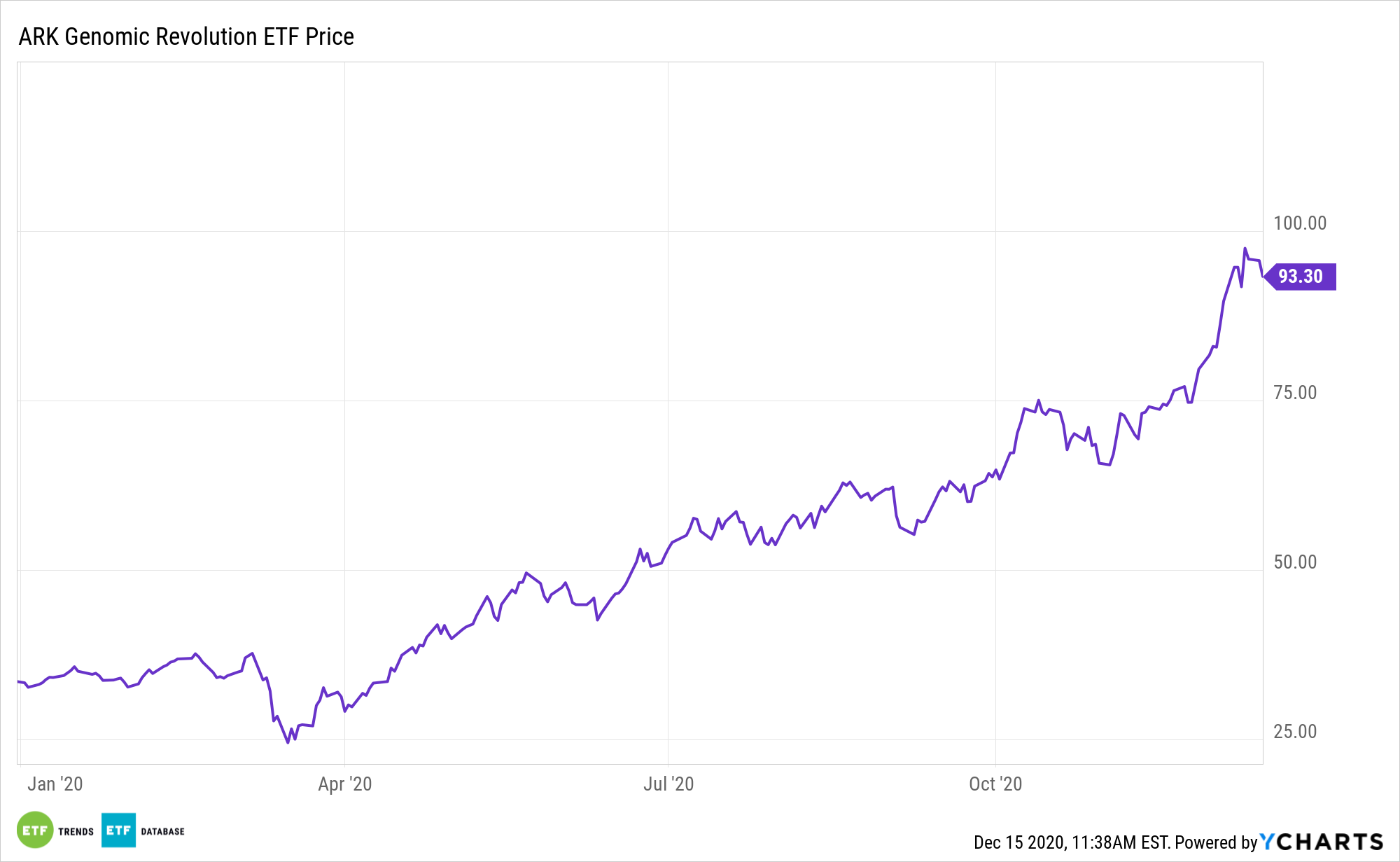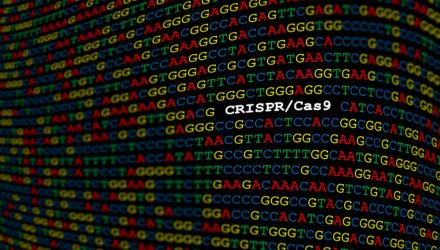The ARK Genomic Revolution Multi-Sector Fund (CBOE: ARKG) doesn’t need more catalysts, but in the rapidly evolving genomics spaces they keep on coming.

ARKG is a substantial departure from the health care ETF most investors are accustomed to. That’s not a bad thing.
“Securities within ARKG are substantially focused on and are expected to substantially benefit from extending and enhancing the quality of human and other life by incorporating technological and scientific developments, improvements and advancements in genomics into their business. One such way this is accomplished is by offering new products or services that rely on genomic sequencing, analysis, synthesis or instrumentation,” according to the issuer.
ARKG components are at the forefronts of treating complex diseases, such as beta-thalassemia (TDT) and sickle cell disease (SCD).
CRISPR Therapeutics Breaking New Ground
Last week, “in collaboration with Vertex Pharmaceuticals (VRTX), CRISPR Therapeutics (CRSP) presented new data on ten patients treated in its gene-editing CTX-001 trial for beta-thalassemia (TDT) and sickle cell disease (SCD). In a positive surprise, the company disclosed that nine more patients have been treated, suggesting that the companies are pleased with its safety profile,” notes ARK analyst Ali Urman.
That news is relevant for ARKG because CRISPR Therapeutics is the ETF’s largest holding. Vertex is also on the roster. The two stocks combine for 9.53% of ARKG’s weight.
“The presentation highlighted that, after 3-15 months of follow-up, all three SCD patients were free of severe pain and that, after 3-20 months of follow-up, seven TDT patients did not need blood transfusions,” writes Urman.
Looking ahead, CRISPR-based innovations will accelerate given the technology’s ease of use, cost-efficacy, growing body of research surrounding safety, and AI-powered CRISPR nuclease selection tools. CRISPR can address some of the most prominent healthcare problems, opening up a significant investment opportunity in monogenic diseases.
CRISPR can cut DNA/RNA at a single point or in stretches; insert DNA/RNA and create novel gene sequences; activate and silence genes without making permanent changes; regulate protein expression levels epigenetically; record and timestamp biological events; track the movement of specific biological molecules; identify the presence of specific cancer mutations and bacteria; locate molecules without making changes; target and destroy specific viral and bacterial DNA and RNA; interrogate gene function multiplexed, and activate drug release at a specified trigger.
“Accompanying the presentation was a publication in the New England Journal of Medicine (NEJM) describing in detail results from the first two patients who received infusions more than a year ago. Reinforced by this NEJM publication, the trial results have increased our conviction that CRISPR Cas9 could cure disease with no off-target edits,” says Urman.
For more on disruptive technologies, visit our Disruptive Technology Channel.
The opinions and forecasts expressed herein are solely those of Tom Lydon, and may not actually come to pass. Information on this site should not be used or construed as an offer to sell, a solicitation of an offer to buy, or a recommendation for any product.

